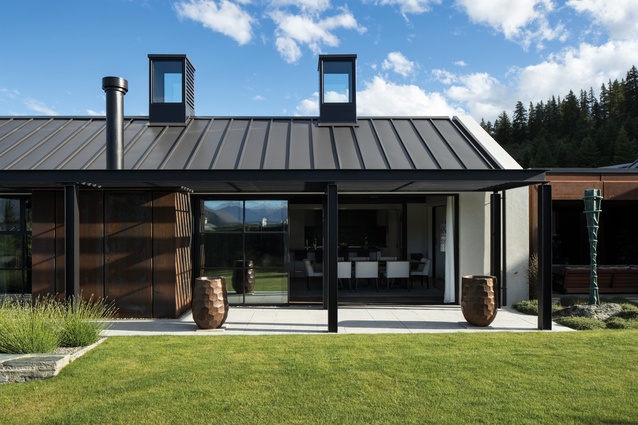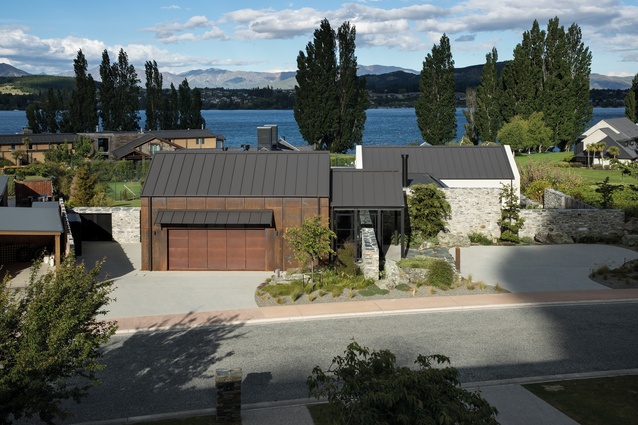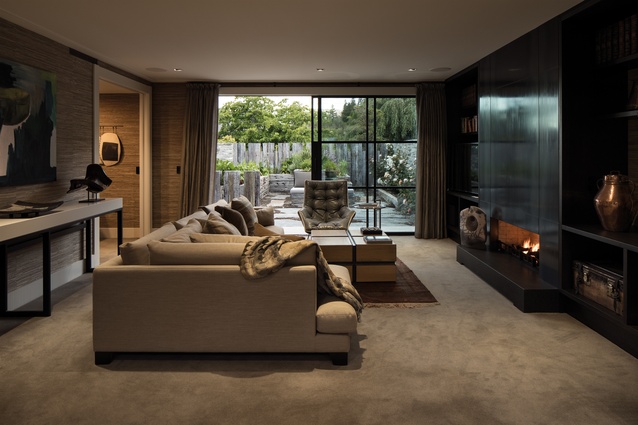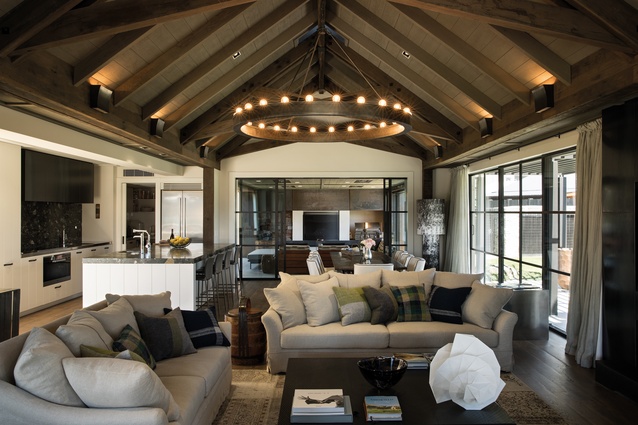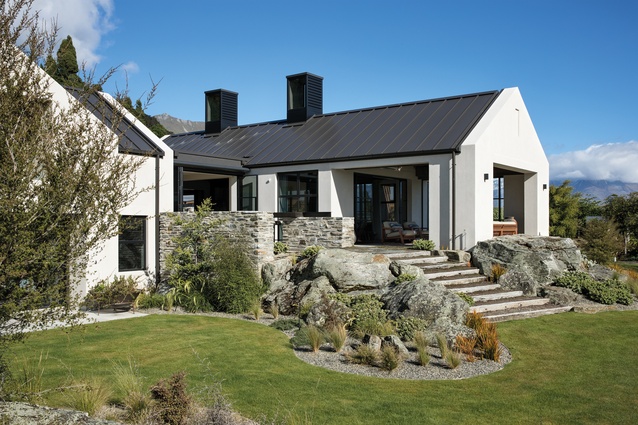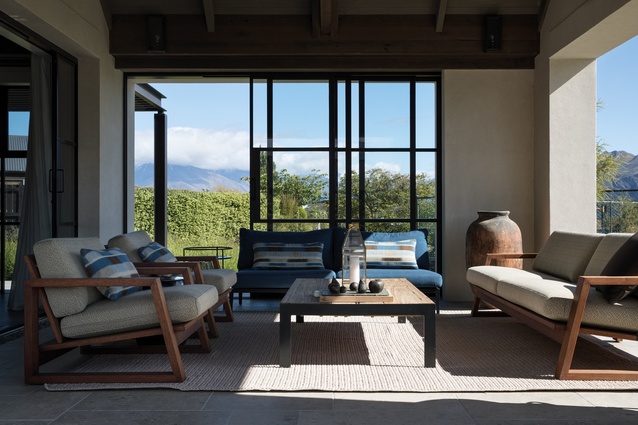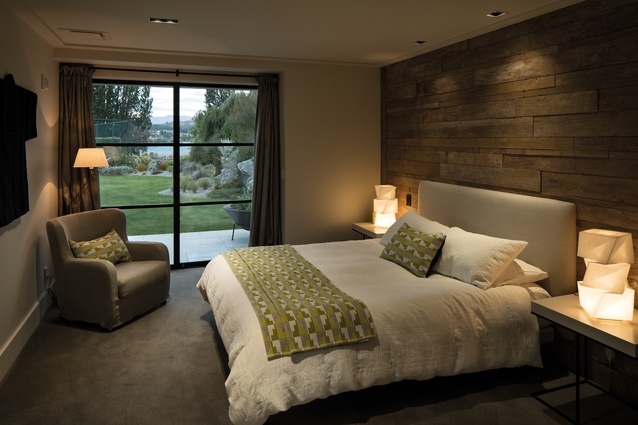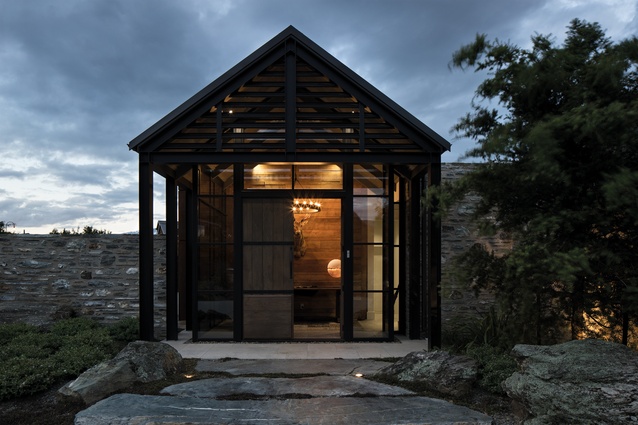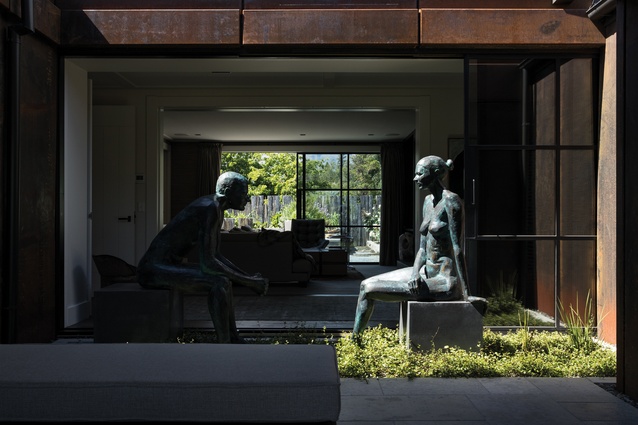Bardon House: Lakeside lodge
A glazed pavilion acts as a lantern to greet visitors to this Wanaka home by Sumich Chaplin Architects. It is set in a residential development a few steps back from the lake shore.
While surrounded by beautiful views and with opportunities for wilderness outdoor activities in all directions, this Wanaka house is overlooked by the higher-sited homes across the road. To counter this, the design turns its back to the street, with a stone wall running alongside the parking area and a Corten steel-clad garage presenting a beautiful yet impenetrable face that allows the owners some privacy.
Designed by Sumich Chaplin Architects for a Christchurch-based couple wanting a second home to use as a base for outdoor pursuits, the house has several private courtyards and terraces where residents and guests can soak in the views and Central Otago weather. The master suite on the upper floor enjoys separation from the communal and guest spaces below. “The clients wanted a true second home, not a holiday home,” says Matt Chaplin.
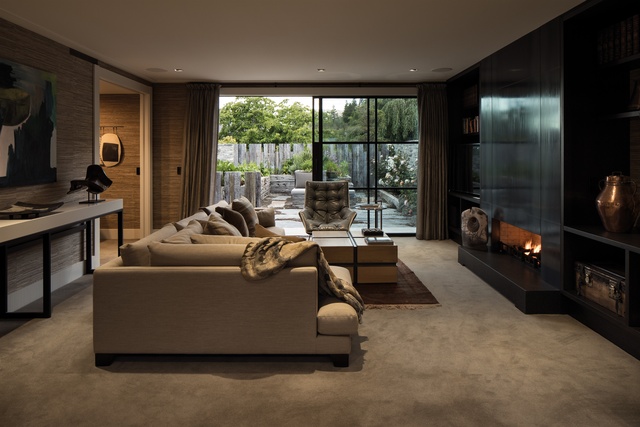
“They wanted a house for themselves and also to have space to host family and friends.” A guest wing provides space for visitors to stay and relax, while a separate, self-contained loft above the garage means the couple’s adult children and their young families can stay even when the owners are not there. “This way guests can use it for a ski weekend, for example, without opening up the whole house,” explains Chaplin.
The house has a rustic feel that fits with the Otago landscape. The weathered Corten carries through to the exterior cladding of the house, where it is used alongside a tinted plaster. Inside, the architects have used hot rolled steel for accents throughout, in areas such as the fireplace in the media den and on the exterior of the rangehood in the kitchen.
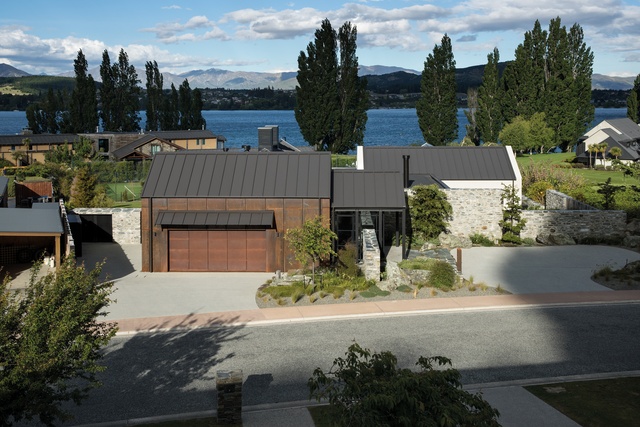
The joinery is also steel but is very fine, suggesting a sense of industrial history. “The oak floors are skipped,” adds Chaplin. “They have been slightly roughened and aged with minor gouges and wire brushing to create marks on them. This helps to relate to the old timbers which are used on the ceiling of the main living space.” The rafters overhead in this room are ironbark imported from Australia, where this timber is often used for railway bridges and telegraph poles.
A covered courtyard is tucked between the garage, the gallery and the main living area. In it, a bronze sculpture of two figures by Cezary Stulgis, an Australian sculptor, takes centre stage, creating some visual separation between the courtyard and the adjacent gallery, and also providing a focal point for the house. “Because the courtyard is covered and solid, we created a landscaped crevasse between that and the gallery so it’s open to the elements,” says Chaplin.
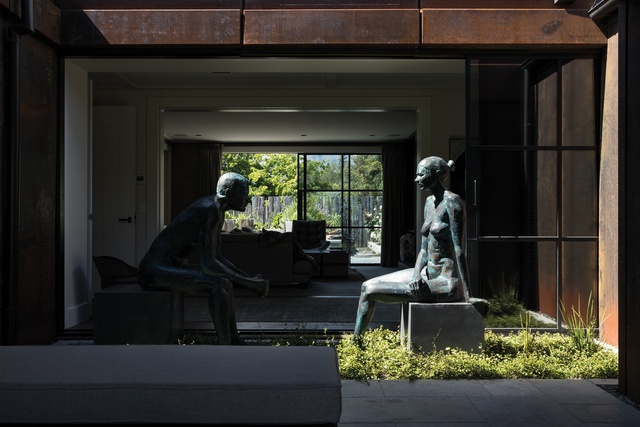
“As you circulate around the house, you are aware of the sculpture and see it. You can slide those doors back into a cavity so you can feel the outdoor room is part of the house and you can also step through that threshold. It provides natural light into the gallery itself.”
Some effort has been made to ensure the home feels at one with its site. The landscaping includes large boulders placed to look as though they have always been there while rustic timber structures in the outdoor spaces give the garden some implied history. With the careful choice of materials both here and indoors, this is truly a home that connects to its surroundings.
Material Palette
Matt Chaplin explains the use of steel and teak in the design of Bardon House.
Why use hot rolled steel for accents throughout the home?
It was something I really wanted to work with, to tie in with the exterior steel joinery throughout the interior. I wanted to bring that type of finish into the house. The steel is hot rolled and then coated in beeswax to protect it. The heat creates a blue tinge to the steel when it is rolled. The beeswax protects it and gives it a natural feel.
What instigated the use of Corten for the cladding?
It’s a beautiful material that constantly changes and ages as time goes on, and it weathers. We wanted to use as many natural materials as possible. The plaster has a pigment in it so there is no paint cover. So, together with the Corten, steel and plaster, it was about pulling together a palette of materials that could all be used in their natural states.
What was used for the interior wall cladding?
Some of the interior walls and cabinetry within the house are lined with 18mm refurbished teak exterior weatherboards, sourced from Indonesia. Once again, they fulfilled the brief for natural materials but they also provide a softly worn look to help ‘age’ the house.
This article first appeared in Houses magazine.


